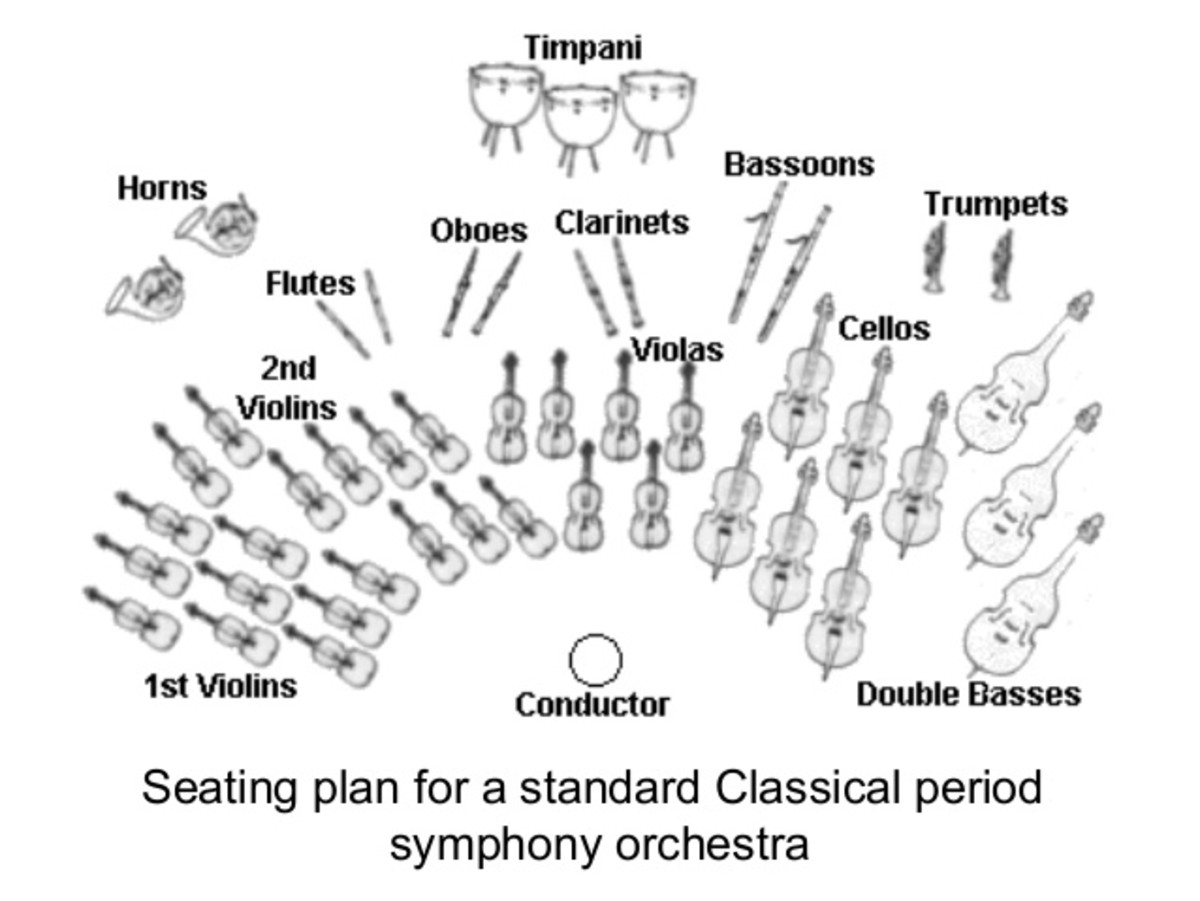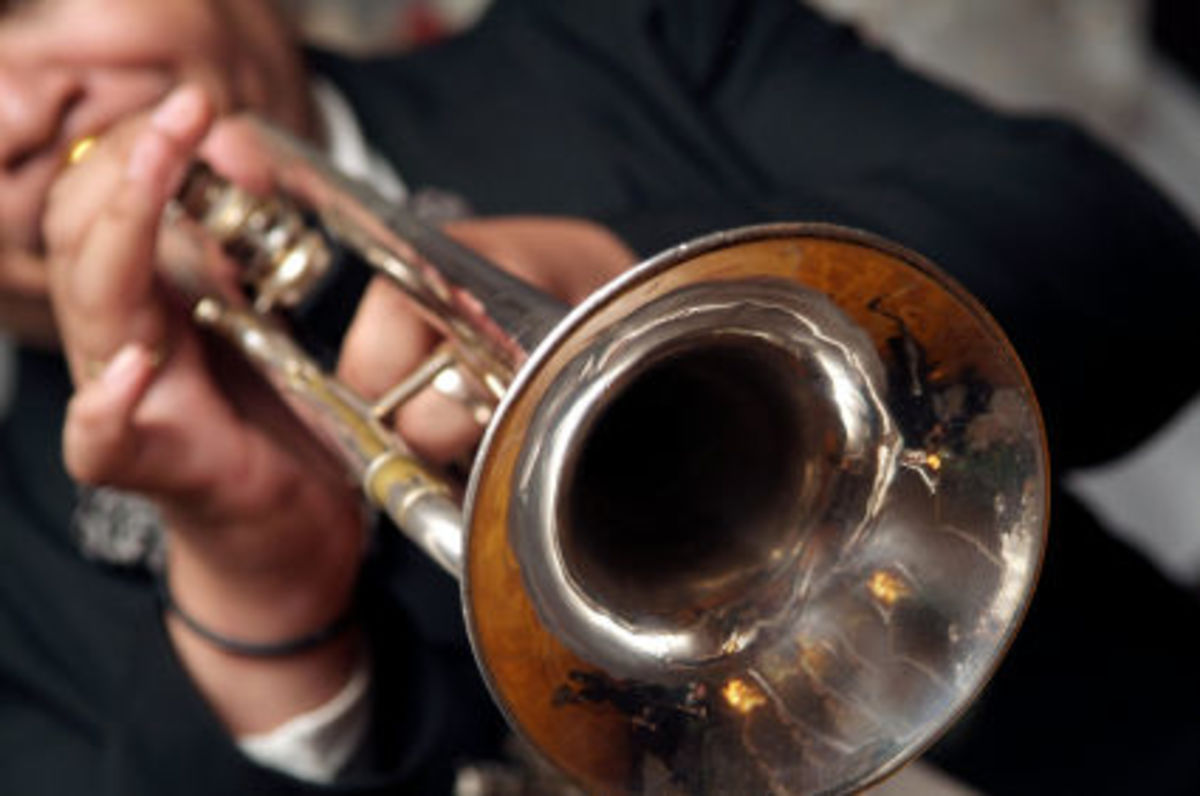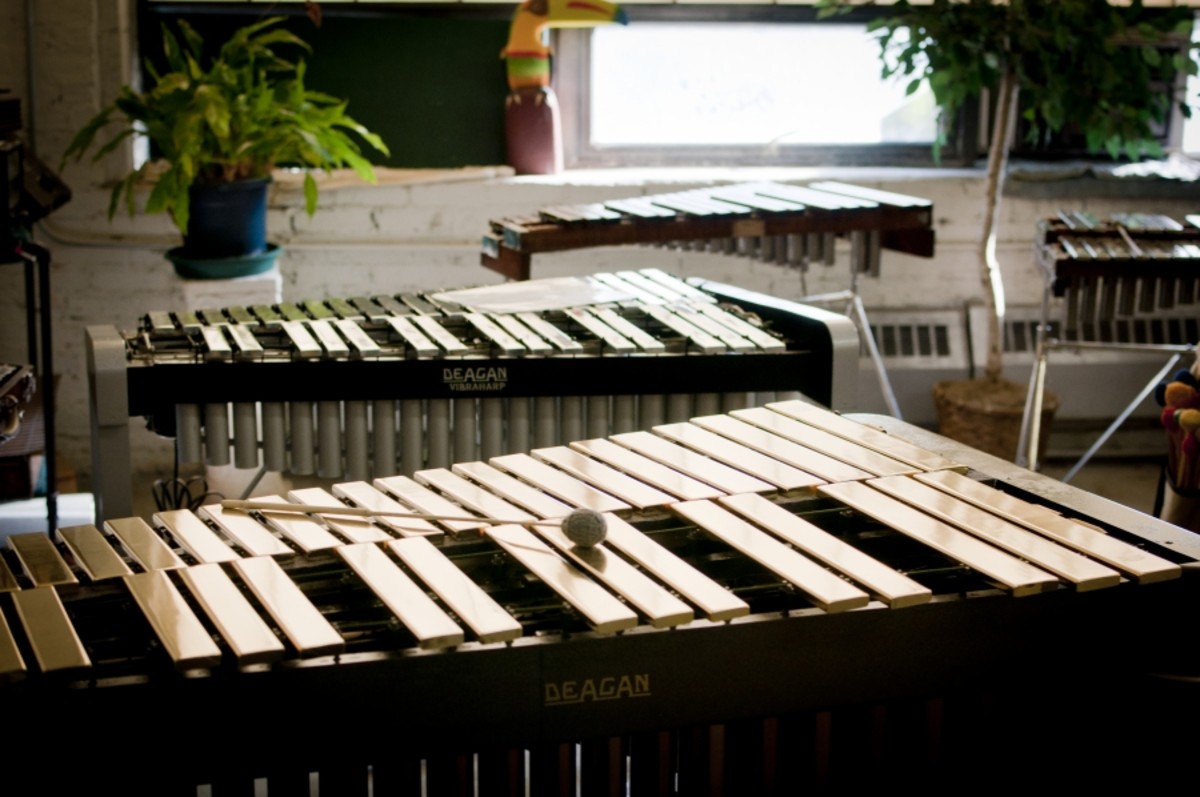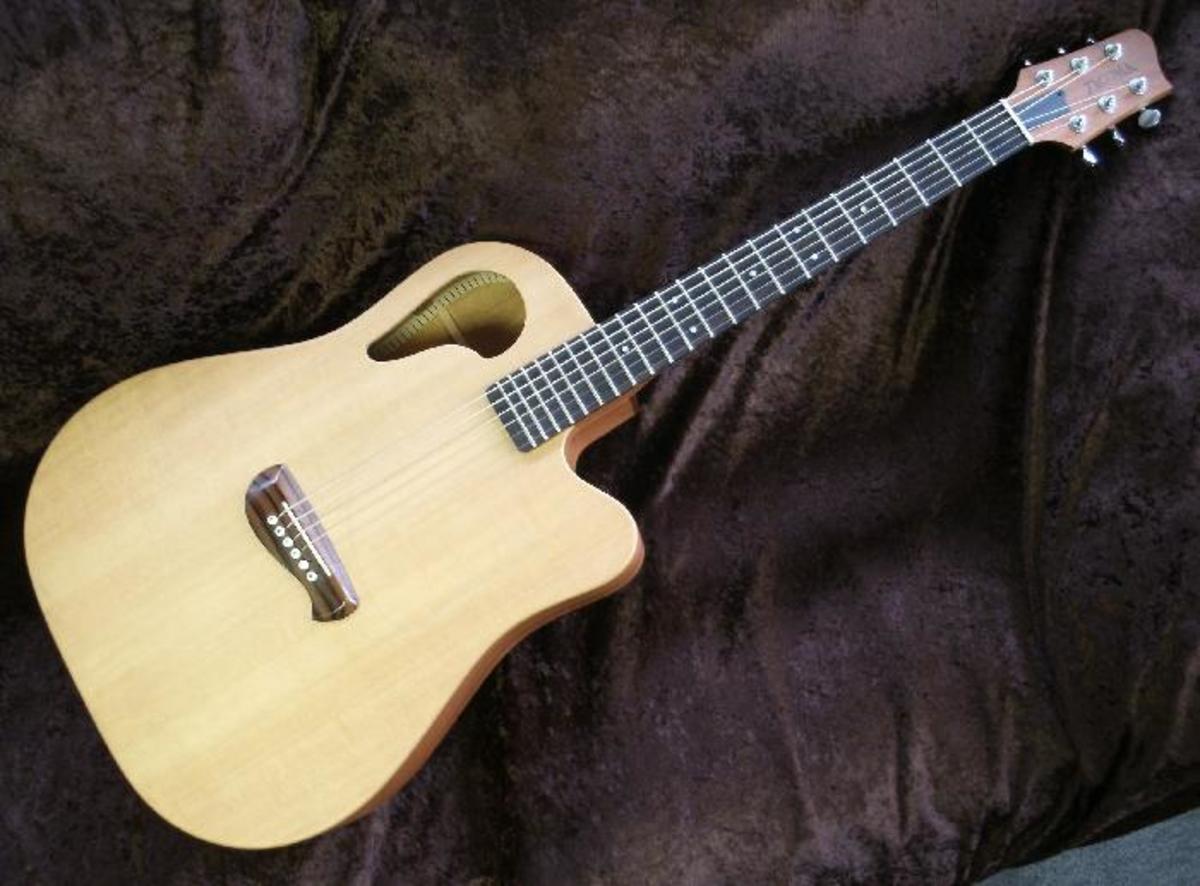The Most Difficult Instrument
What is the most difficult instrument to play?
This is an interesting question to be sure, and one I hope to answer by the end of this hub. In order to answer it, I will briefly go over each section of instruments, and a few instruments in each section, explaining the differences between them and the differing difficulties they all have. I will say now that some instruments are easier to play for some people, so the answer to this question will not be the same for everyone. If you're interested, read on to discover which instrument, at least in my opinion, is generally the hardest to play.
Strings
These are arguably the most beautiful-sounding instruments, but can be quite difficult to master. Since this is the section I know least about, and cannot play any instruments from, I really don't know enough about them to adequately tell whether they are harder than other instruments. For now, we'll skip this section, but keep in mind it's quite possible that strings as a whole are the most difficult instrument to play. It's just that I don't know personally whether they are or not.
Winds & Woodwinds
I'll begin with winds and woodwinds, which are kind of in the same section, as both are considered winds. Woodwinds are part of the wind section, but all woodwind instruments actually require wood in addition to wind to make music (you never would have thought, huh?)
FLUTE / PICCOLO (Wind)
This instrument is probably the easiest to play in terms of the valves. It doesn't have quite as many valves as the clarinet, but it has more than the trumpet (which is a good thing as you'll see later). However, the difficulty in this instrument is the way in which you have to shape your lips in order to get a proper sound out. The flute (and the piccolo, a similar but smaller version of the flute) requires that you blow directly downwards into the opening while keeping your face and head level (yeah, there's a lip-twister for you.) Once you have this down, you also have to blow air at the correct speed, or you'll get the wrong tone. So, there's a bit of difficulty here, but anyone with the right mindset could probably pick up this instrument easily.
CLARINET / SAXOPHONE (Woodwind)
Yeah, I'm committing "saxrilege" by lumping these two instruments together, but to me there isn't much difference except for the tone and range of the instruments. They're both played pretty much the same way, and they both use single-reed mouthpieces. There's a bunch (and I mean a ton) of valves, switches, and buttons, all shaped differently and placed in various spots all over the instrument. So basically, the difficulty here is getting a grasp on the thing and figuring out where all your fingers go. Also the reed takes some preparation, you can't just play it dry and get a good sound. You actually have to suck on the reed for a few minutes before you play, just to get it wet so the tone doesn't sound scratchy and the reed doesn't break when it vibrates too hard. Once you get used to those things, however, it shouldn't be that difficult to play really well.
OBOE (Woodwind)
Now, this instrument can be a real booger to play. This is because unlike other woodwinds, it uses a double-reed mouthpiece. For those who can't picture this, instead of having a nice big reed against a piece of plastic with a thin space in between to vibrate, you've got two inscrutably tiny reeds against each other. This is not only horrendously difficult to get your mouth on properly, but then you've got to practice like crazy to get a good tone. Also the reeds break more often because, since both are flat, putting them against each other doesn't leave an air hole. They must be curved into kind of a football shape so there can be vibrations, which make the noise. Overall, the oboe is definitely one of the more difficult instruments.
Percussion
I know very little about drums and other percussion. I've played drums in Rock Band, but that doesn't really count, even though actual drummers have told me that the Rock Band drums are very realistic, aside from not being able to cross your hands.
What has always impressed me is the sheer variety of percussion instruments. Beyond your basic drum set, which in itself contains cymbals and suspended cymbals (two cymbals with open ends pressed together, attached to a foot pedal), snares, toms, and bass drum, there are countless other instruments which also fall into this category. Music without percussion is nice, but a really good beat just can't be beat!
I can't play any of them, so my hi hat's off to anyone with the uncanny sense of timing and multitasking ability to play percussion. If music's a sandwich, then percussion is the mayonnaise. You can eat a sandwich without it, but it's just missing something, it's a bit too dry. Sure mayonnaise may taste somewhat plain by itself, but when added to the sandwich, it truly makes it complete.
Brass
A brass instrument is one that is generally made of metal, but also that doesn't use a reed. Brass is also in the wind section, but I've put it in its own section because it's very different than the other instrument sections, for a number of reasons. Brass requires air to play, but the sound is not created by air vibrating or by wood vibrating. Your lips are what do the vibrating, which is kind of a buzzing sound without a trumpet, kind of a duck call sound with a mouthpiece, and a brilliant, warm tone with an instrument on the end of the mouthpiece. I have played trumpet for about 10 years, so high brass is the section that I know most about.
The main difficulty with most of the brass instruments is in the way they produce different pitches, which is completely different than other instruments. For instance, for every note a saxophone can produce, there is a unique fingering position, which is the layout of which buttons your fingers are pushing and which ones they're not. Brass doesn't work like that. Sure, you can play about 10 different notes using all combinations of the three valves on a trumpet, but then you're stuck because you've run out of valves, right? Not so. Brass instruments can (and must) play higher and lower pitches using the same fingering position by changing the tightness of the lips. I know it sounds strange but that's how it's done, and it's what makes brass instruments so difficult to play despite the small number of valve positions.
On each valve position, depending mostly on the range of the brass player, 2 to 5 different pitches can be produced by varying lip tightness. By "range of the brass player" I mean the physical fitness of that player's lips. When one first begins playing brass, it's nearly impossible to play very high pitches because the lips are yet not capable of making a tight enough shape, or are not strong enough to adequately maintain such a shape while a strong airstream is hurriedly going through them. The muscles that control your lips must be built up so that high notes can be sustained, which requires a great amount of lip control and air speed control. Only once your lips have some strength in them can you easily hit notes in the upper registers. This physical fitness of the lips can actually become a visible change. Any long-time brass player will begin to have a small protrusion of the upper lip, which is the main part that vibrates, so that the middle of your upper lip begins to form a "V" shape.
High Brass
TRUMPET / CORNET
Most trumpets or cornets have three valves, though very different than a French horn which also has three valves. The fingering chart is exactly the same for all of them, only the range is different. These have varying sized mouthpieces, which are used to better accommodate different lip sizes, which is important for comfortable playing and developing a good embouchure. My younger brother is a good example; he plays trumpet with a 1.5c size mouthpiece, which is about the largest one you can get for trumpet, because he has very big lips. I've noticed a substantial difference in his playing due to using the correct size mouthpiece. I've always used a 7c, and it never bothered me, so I'm sure it is close, if not the right size. There is also a rare piccolo trumpet with 4 valves, which is pitched an octave higher than the normal trumpet. A cornet is mostly the same as a trumpet but is a little smaller and is pitched in C instead of B flat.
Mid Brass
FRENCH HORN / MELLOPHONE
First off, the French horn has three valves just like the other brass instruments, but it is shaped very differently, in more of a spiral or shell rather than a loop. This produces a very different tone, and since french horns are pitched differently, they have a completely different fingering chart than the other instruments. Also, since there is less space in the instrument, the sheer volume produced is much louder than the other instruments, and the french horn player who does not wish to lose an arm trying to hold the thing up will place his other hand inside the bell (the large opening where the sound comes out) to help distribute the weight. Also, the french horn mouthpiece is of a very different design than the other brass instruments, which also contributes to its unique tone. This mouthpiece is much harder to buzz on and keep a stable note, which makes the French horn even more difficult to play. I will also mention that there is a double french horn with an extra thumb valve, giving a possible six valve positions rather than three. The mellophone is basically a marching-band version of the french horn. It's pitched the same, it sounds the same, it just looks different and is easier to play while marching than a french horn.
Low Brass
TROMBONE
This instrument is the one that, to me, seems to be the most difficult to play. I honestly do not understand how they do it. Sure there are trombones with valves, but they're cheaters. The real trombones use a slide, which has seven distinct positions (which are arbitrarily somewhere along the length of the thing). Each position functions the same as a valve position on another instrument, but the difference is that the player must memorize the positions rather than just being able to push down a valve and be sure that the right note will come out. Combine this with the already-difficult brass mouthpiece and the extremely wide range of the trombone, and you've got yourself in a lot of trouble. You have my true admiration should you be among the skillful few who are able to play trombone well.
BARITONE / EUPHONIUM / TUBA
The bigger lips you have, the better suited you'd be for a lower-range instrument, because your lips will naturally vibrate slower and produce much more air, which is necessary to play tuba, euphonium, or baritone well. Trumpets are better for those with small lips, although there are varying sizes of mouthpieces that enable some degree of freedom.
Other Instruments Worth Mentioning
GUITAR
Yeah, I know I skipped over this in the strings section, but guitar in particular seems to me really difficult. I'm pretty good at Guitar Hero myself, but when it comes to a real guitar all I can play are some basic chords and melodies, nothing too grand. Guitar players have my true respect.
PIANO
This is an instrument which I have just recently picked up, and I've only played it for about a year. However, I can say that this instrument has been the most enjoyable for me to learn. You see, with trumpet, the parts you have to practice are written to sound good with the inclusion of a larger band, and because of this, practicing by one's lonesome sounds awful at best. Sure there are solos you can learn, but still, it doesn't really give you much enjoyment unless you're playing with a band. Piano is different. Although it works great as an accompaning instrument, it sounds good by itself too, and this makes it a lot of fun to practice. I thought the hardest part of learning piano was going to be learning to do different things with both hands at the same time, and I was absolutely right. It's horrendously difficult at first, but after practice, you just get used to it. It's a part of the instrument. Once you play that first piece of music that contains two different melodies at the same time, you begin to gain confidence that you might just have potential at learning piano.
HARMONICA
I think this instrument sounds splendid when you come across a really skilled harmonica player who uses tonguing to cover up certain holes on the harmonica, which allows for more control over chords and makes them sound a lot better. It is such a neat little instrument because you blow outwards (into the harmonica) to get a certain set of notes, which are all third intervals from each other (meaning there is one note in between them). Then when you breathe inwards (the air is leaving the harmonica) you get all those other notes that were in between. This makes chords very easy to do, because you just blow one way into more than one hole and you get a chord. So to go up the scale, you blow into hole one, then you suck air from hole one, then you blow into hole two, and suck air from hole two, and so on.
Now, the really neat thing is that the seventh & octave hole is reversed. This means that you suck out to get the seventh note of the scale, and blow into it to get the octave note (the same note as the first note you played but eight notes higher, which is called an octave). What does this mean? Well, a major triad chord has the notes 1, 3, and 5, and 8 adds the octave. So when you blow into any four adjacent holes, this is the exact chord you get because the 7/8 hole is reversed! Isn't that nifty?
ACCORDION
Unless your name is Weird Al Yankovic, this will probably be a very difficult instrument. For one thing, it's extremely uncommon, and its sound is a lot different than other instruments. It doesn't fit well into any of the other categories, which makes it very unique. I do know that there are two rows of buttons on this thing, one of which is just a small electronic keyboard that you can use for chords. The other set of round buttons is used for playing notes on the accordion itself. To produce sound, you pull outwards slowly and when it gets too long you begin pushing inwards, and while you're doing so (apparently, the direction DOES matter, I recently found out, similar to a harmonica) you push down the round buttons to play music. Some accordians have another row of round buttons instead of a keyboard, though I'm not sure how those work. The accordion is a difficult and interesting instrument, to say the least.
KAZOO / CASTANETTES
No, I'm not actually including these, I just thought it might give you a laugh. I might add that it would theoretically be possible to play both at once, but how difficult, I'm not sure.
TONGUE HARP
Ha ha ha ha. Okay, I'll stop now.







